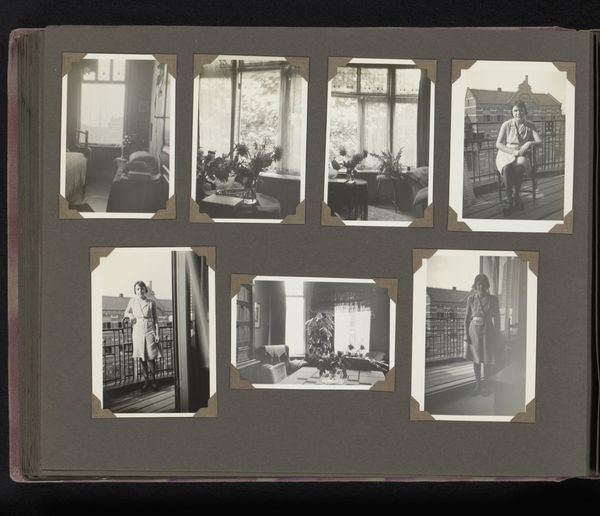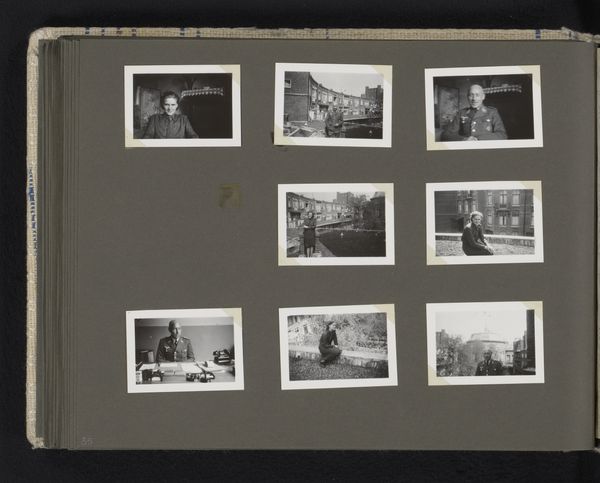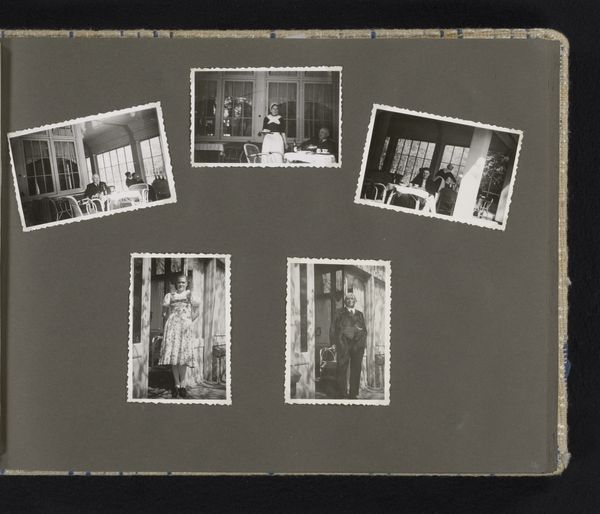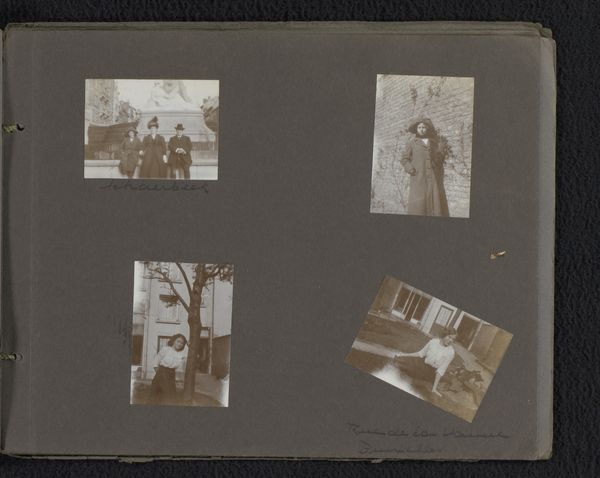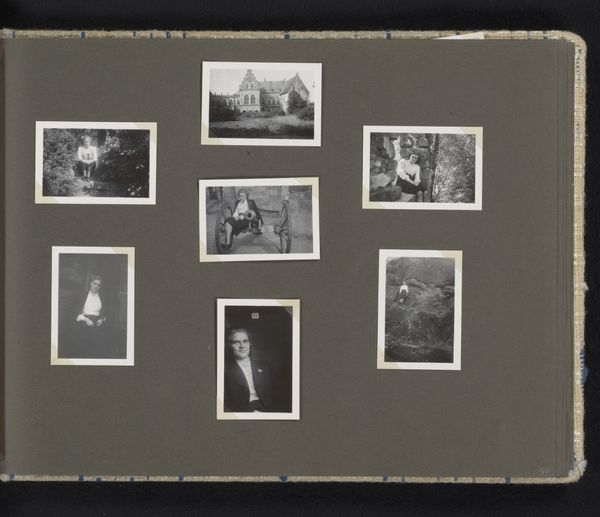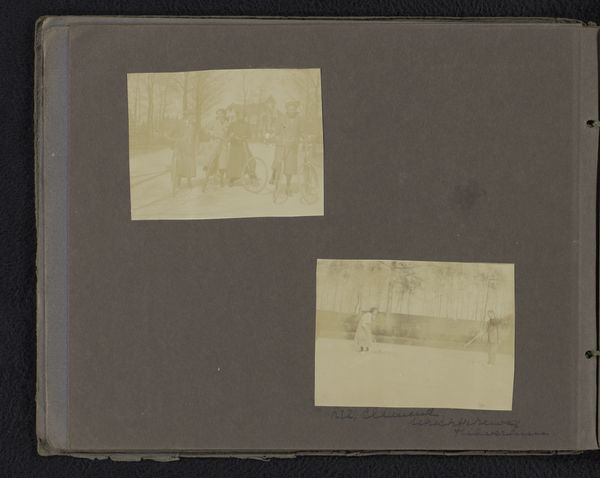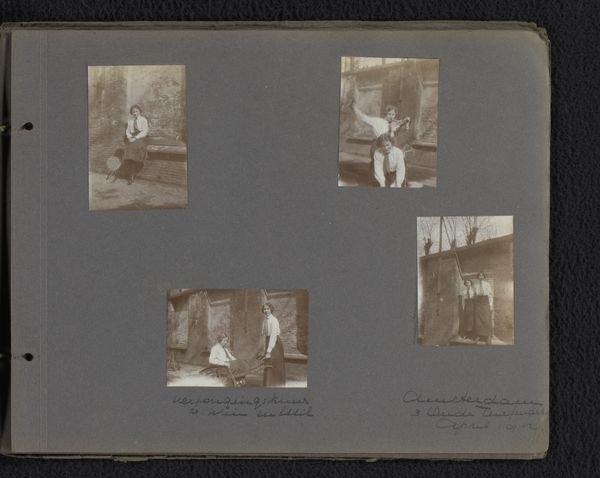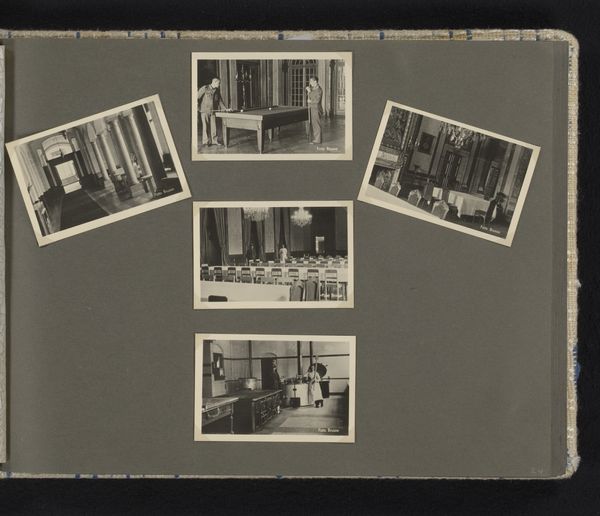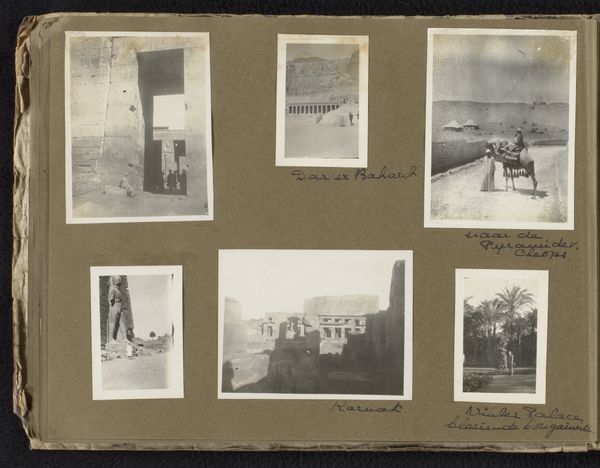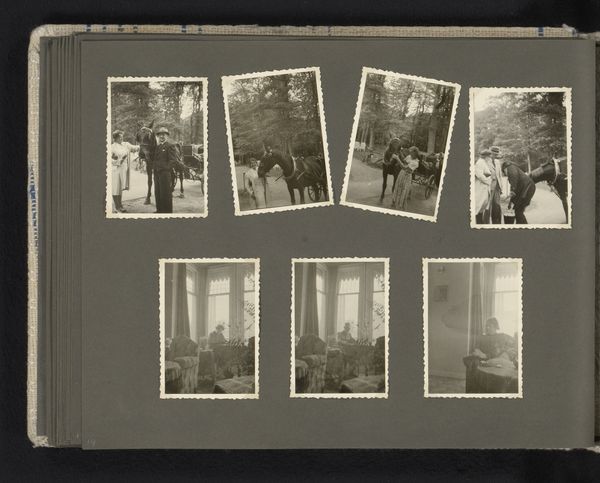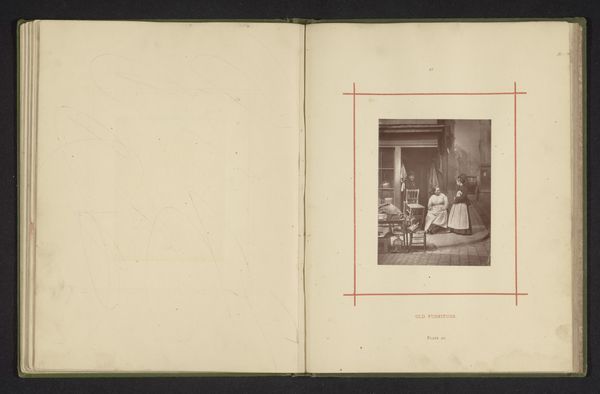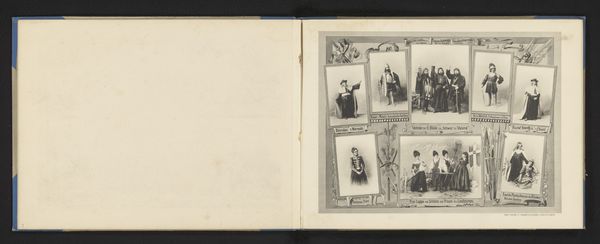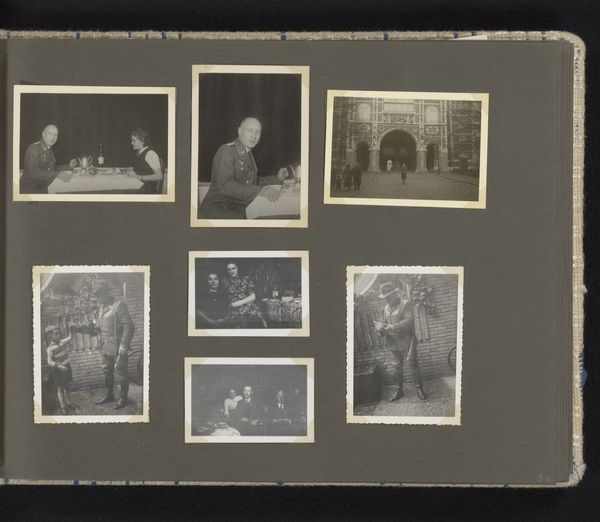
photography, gelatin-silver-print
#
portrait
#
still-life-photography
#
dog
#
street-photography
#
photography
#
gelatin-silver-print
Dimensions: height 95 mm, width 65 mm, height 245 mm, width 310 mm
Copyright: Rijks Museum: Open Domain
Editor: This is "De hond," or "The Dog," a gelatin-silver print from 1941-1942, currently held at the Rijksmuseum. It strikes me as an eerie, disjointed story. What visual symbols do you find most potent here? Curator: The dog itself, repeated in several images, isn't merely a pet; it's a primal symbol of loyalty and companionship. But consider the era – wartime. That loyalty could be to a person, an idea, or even a nation. Do you notice how in some frames the dog seems separated from the people, looking away or positioned distantly? Editor: I do. In some shots, it's near someone leaning out the window, but there's distance between them. Almost a barrier. Curator: Precisely. Think about the psychological weight of observation – the people watching from windows, the dog's detached gaze. These are all loaded symbols. In times of uncertainty, the home, usually a safe space, becomes a stage for both display and observation, inviting public performance of the personal, don’t you agree? Editor: Absolutely. The windows, like picture frames, emphasize that sense of being watched, of being on display. And the repetition of the dog makes it less about an individual pet, and more about the idea of faithfulness during such a disruptive period. Curator: Indeed. The gelatin-silver print itself, a medium capturing fleeting moments, adds another layer. It becomes a memory, carefully preserved. These aren't candid shots; they’re crafted images intended to convey something about identity and belonging during wartime. It’s interesting how they’ve chosen these precise moments to capture this period, framing people from an uncomfortable, surveilling position. Editor: So, it's about more than just a dog; it's about cultural memory, about how we perform identity during upheaval. I will remember that for next time I look at photos. Thanks so much. Curator: And next time, consider whose gaze we adopt and who benefits from cultural performances in times of change.
Comments
No comments
Be the first to comment and join the conversation on the ultimate creative platform.
